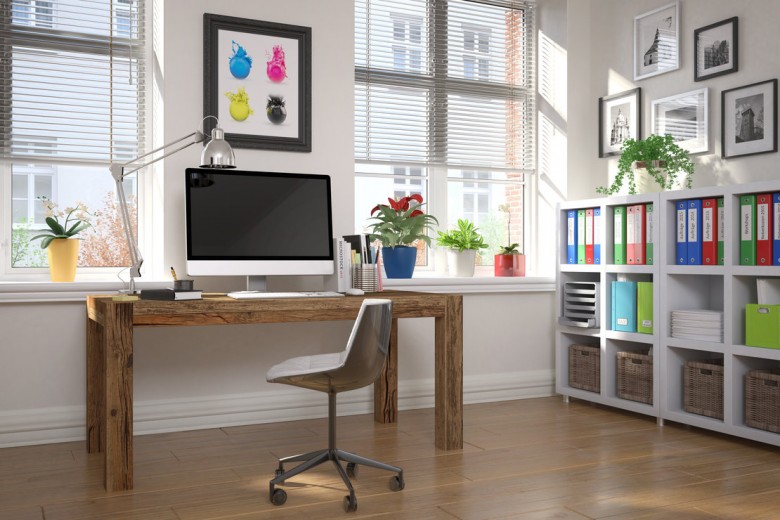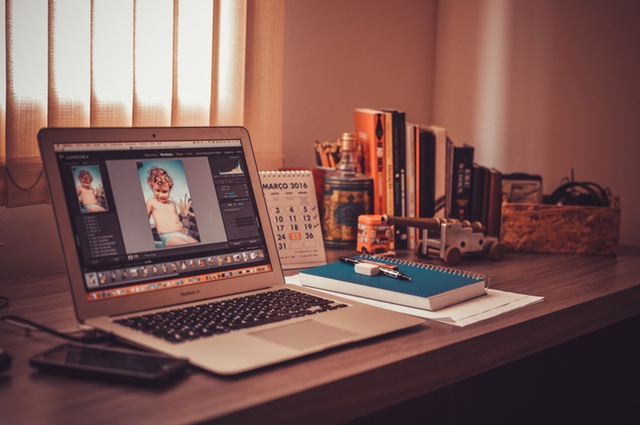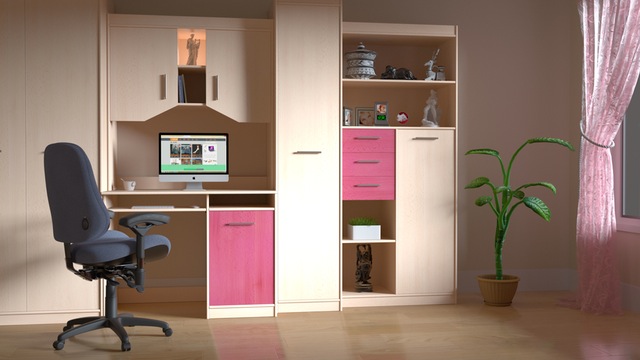Over the last seven years, I’ve started and stopped businesses in four states, working out of my home in each location. Every time I packed up shop I hoped I could retain some clients long-distance, but that usually wasn’t plausible. The artistic design (photo, video, graphic and web design) services I offer and my personality typically shine most when I can work face to face with a client. That just means with each move my business typically starts over. A new search for clients. A new era of marketing and awareness. A new examination of my skills and the services I offer. A new office space. Every time we have moved the process has become a little more streamlined.
As of this week I’ve officially relocated yet again—and the boxes are finally unpacked. As I spent time unloading box after box, and hours sorting through office supplies, files, papers, USB cords and business cards—it hit me that although the process was tedious, I knew how to set up my office. After all these moves, I finally have a system that works. While I still can’t decide where to keep the toaster and the coffee pot in the kitchen, I know where every paper clip and colored pencil in the house is. Even now that the house is mostly clear of boxes, the office is still the only room in the house that brings me calm. Everything is in its place. It’s usable, organized and familiar.
If you are working from home or considering it, maybe my years of trial and error can serve you. Here is a list of seven Do’s and Don’ts for setting up a home office I’ve learned along the way.
Do create a workspace
Even if it isn’t it’s own special room. If you are tight on space and don’t have an extra room to dedicate to an office, that’s fine. Just pick a place in your home where all office-related items can live. Make sure your space has some kind of work surface.
No matter how tidy you are, sometimes work will need to stay out on the desk. It’s nice to have a space where you can leave something out, guilt-free, that doesn’t interfere with the other members of your household.
DON’T buy special office supplies
Most of us already have pens, paper, highlighters, scissors, etc in our home. Don’t get conned into thinking you need new items for your business. This will save you a few dollars and keep your home tidier, since you won’t have excess supplies all over your home. As you use up what you have, you can upgrade to cooler, prettier options. Believe me—productivity doesn’t usually increase because you have matching desk supplies.
DO store all of your home’s office supplies together
When you transition to working at home, corral all the office supplies in your house, sort them and store them in your office. Now that you have an in-home office, there is no reason to store some office supplies in one location of your home and others in your work area.
Keeping some pencils in the kitchen, a small stack of envelopes in the living room for paying bills and notebooks in a hall closet will only lead to confusion. You’ll forget what you have, buy extras you don’t need, and be frustrated when you can’t find something. Find every office-usable item in the house. Then store them all together into whatever space you have dedicated for business purposes.
DO store office supplies by category
Once you’ve found all the office supplies in your home, sort them by category (writing utensils, mailing supplies, paper/notebooks, paper clips, business-specific items, etc). Designate a place for each type of item. I like to use small canning jars and small boxes I have laying around the house (like the box my phone came in, a small tin from a container of colored pencils, etc) to house each item.
If you really don’t have anything to use, check out the Dollar Tree. They have a great selection of simple containers that I love. Knowing where each type of item should be stored prevents drawers from becoming a clutter of miscellaneous cords, clips, and chaos. Make sure you tell your family/roommates where things are kept so they can access what they need and help keep items put away properly.
DON’T clutter up the floor
This is especially important if you have a small workspace. Don’t buy into the lie that in order to have everything organized and functional you need a big space. Instead of storing everything you need in units that sit on the floor, explore options that will make your walls usable space as well. Pegboards can do wonders by transforming walls into valuable storage by allowing you to hang containers, files, and clips.
Use cork board for pinning up documents, calendars, and other items you might need at eye level. Install floor to ceiling bookshelves or a tall bookcase. This single unit can hold nearly everything your office will need, and it can double as desk storage if yours doesn’t have drawers. Install shelving over windows or doors to store items that are used infrequently.
DON’T overlook outlets
You are probably smart enough to avoid this mistake, but I wasn’t always so wise. Don’t set your heart on a location for your desk…only to discover that there’s nowhere to plug in your charger. Whether you are working in an office or a corner of the kitchen, plan your space around the power sources available.
DO have a designated space for loose papers
A lot of clutter in my office comes from loose papers, receipts, mail, notes, and the like. Often, I can’t deal with each item as soon as it comes into my hand, and it soon piles up. Instead of letting these loose bits take over, give them a home. Make a file, put a tray on the desk top, hang a file from your pegboard, designate a drawer. It doesn’t matter where it’s kept, just give these items a place. This will ensure none of them get lost or overlooked.
Then pick a regular time (like once a week, or once each day) to address everything in the stack. Take care of each item, file it, save it, digitize it, then recycle the paper. This stack should never have items more than a week old in it, and should ideally stay close to empty. Cultivate this habit and you’ll save your sanity.















Pingback: Benefits of virtual workspaces that we never thought possible - StartUp Mindset
Pingback: It's Not For Everyone: The Case Against Remote and Teleworking - StartUp Mindset
Pingback: How to Balance Being a Parent and an Entrepreneur - StartUp MindsetStartUp Mindset
Pingback: 10 Easily Overlooked Tax Deductions You May Be Missing - Startup MindsetStartup Mindset